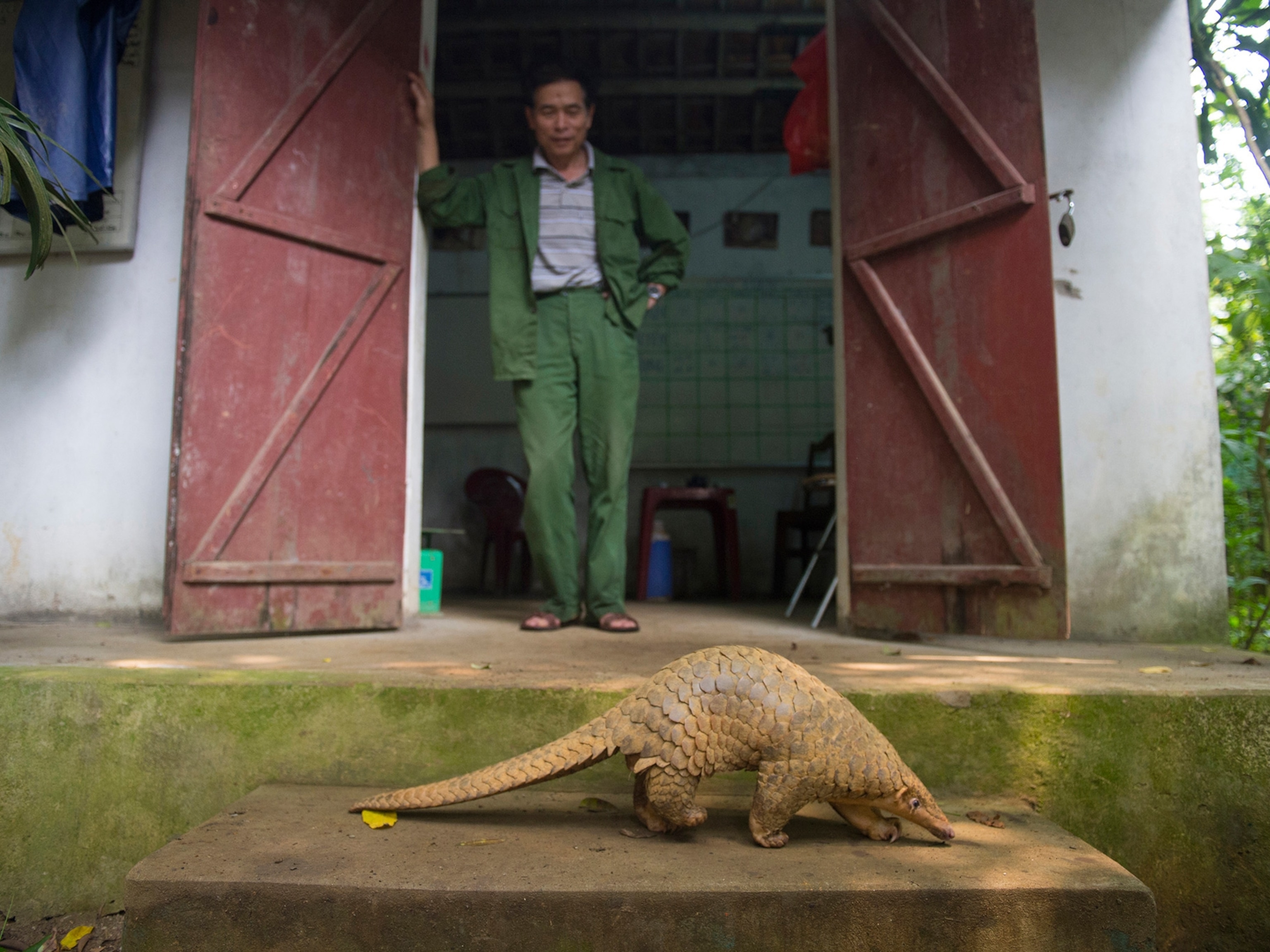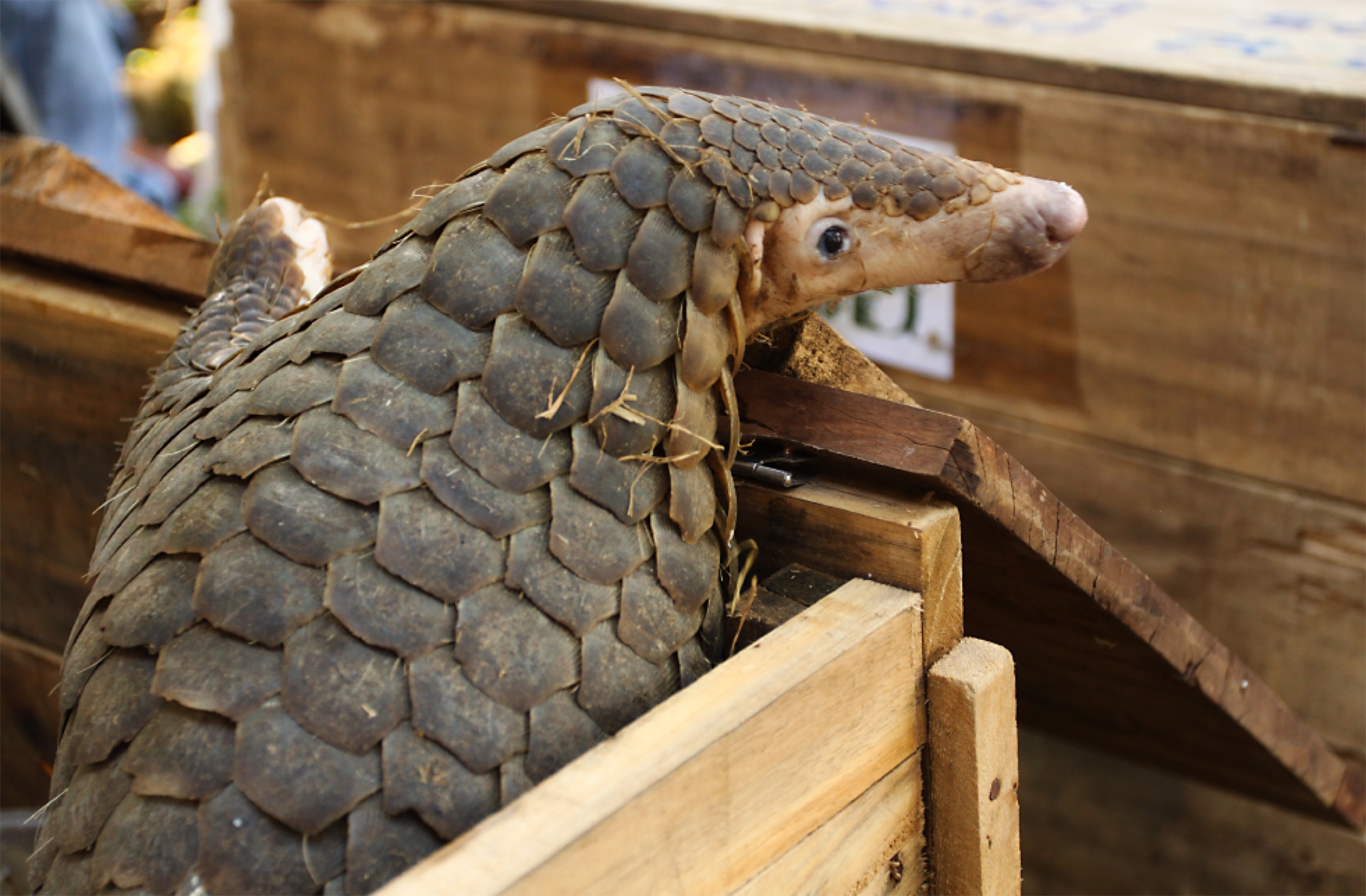
Pangolins Released Into Wild May Be Recaptured and Eaten
The largest ever release of rescued pangolins gave 46 of them a second shot. But chances are that some will again fall victim to poachers.
Central Vietnam — The pangolin tentatively poked its nose out of an open pet carrier, sniffing the humid night air. Ahead, freedom beckoned: a tangled, fern-filled forest in central Vietnam, remote and heavily patrolled by anti-poaching rangers. But as if unable to accept the reality of what its beady black eyes were beholding, the animal remained firmly in place. Another minute passed. Then two. Finally, slowly, it unfurled its slinky-like body and quietly waddled into the darkness, never looking back.
On Monday, in the largest such event ever to take place for pangolins, this animal and 45 others rescued from traffickers were put back into the wild at a reserve on the Vietnam-Laos border (unidentified for fear that poachers reading this might target the location). But while the ordeal for those pangolins is over for now, there is no guarantee that they won’t wind up back in the illegal wildlife trade in the future.
“I feel very good about the release, but we know that no place is 100 percent safe from poachers,” says Thai Van Nguyen, founder and executive director of Save Vietnam’s Wildlife, the nonprofit organization that undertook the release. “That animals can wind up back in the trade is always a concern for us,” he said. “If pangolins are just trapped again, then it doesn’t mean anything if we rehabilitate and release them.”
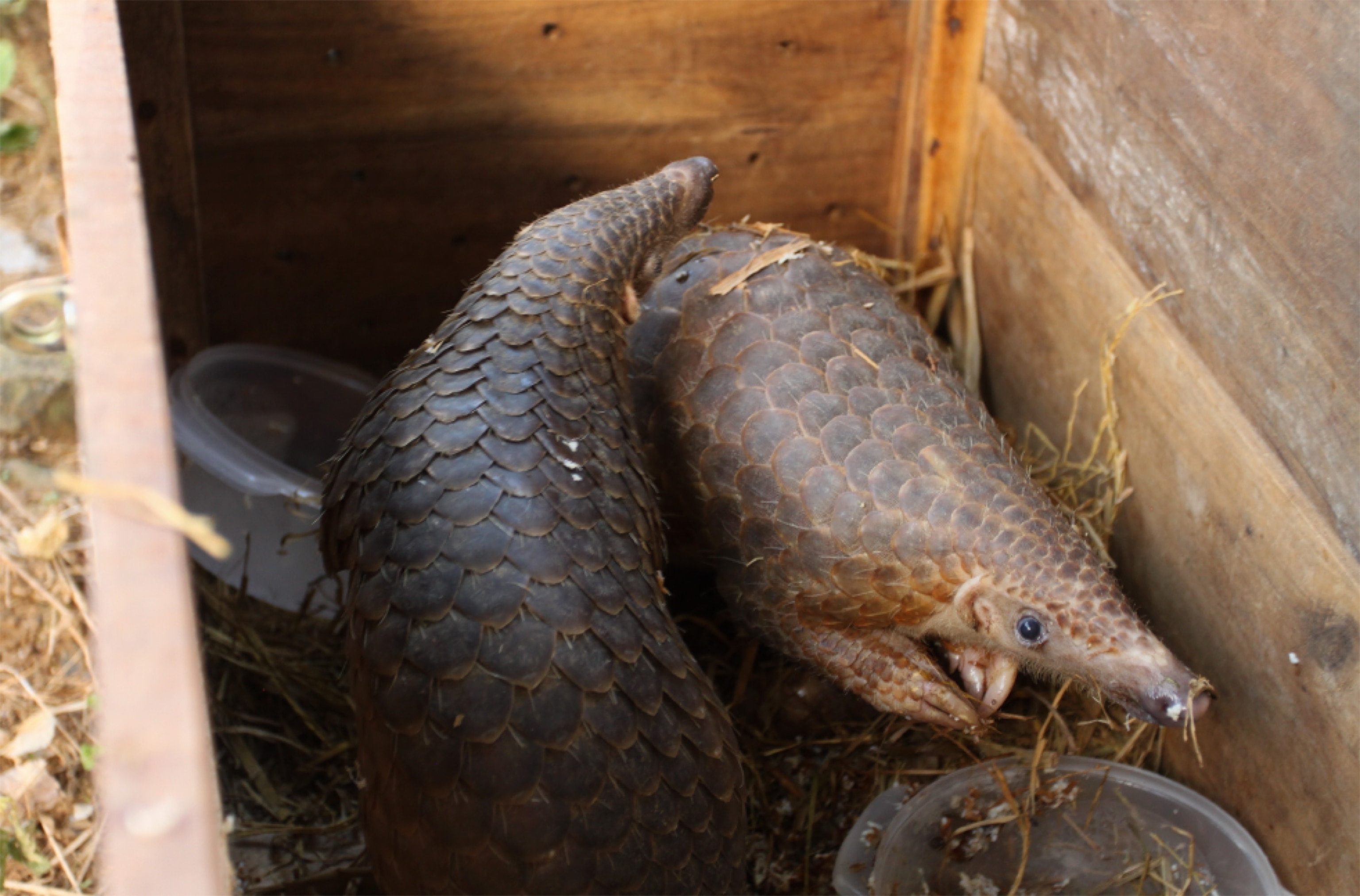
Also known as scaly anteaters, the world’s eight species of pangolins are split evenly between Africa and Asia. Strange in appearance and aloof in temperament, all are considered threatened by the illegal trade, thanks to skyrocketing demand in Vietnam and China for their scales—used in traditional medicine—and meat, considered a delicacy. Though no population counts are available, the International Union for Conservation of Nature, the body that sets the conservation status of species, ranks all pangolins as vulnerable to critically endangered.
Most of the pangolins Nguyen and his colleagues set free this week were discovered in September, packed in boxes of ice on the back of a truck in northern Vietnam. Of the 61 the police confiscated, 12 died from trauma and injuries, and several are still recovering at Nguyen’s facility—the only rehab center in Vietnam capable of caring for those animals.
The rest were released, but they’re the lucky ones—they represent barely a drop in the total illegal trade. More than one million pangolins are estimated to have entered into the black market during the past decade, making the species the most trafficked mammal in the world.
In September pangolins were given the highest level of global protection under the Convention on International Trade in Endangered Species of Wild Fauna and Flora, the body of nations, including Vietnam, that regulates the international wildlife trade. Vietnam’s legislation also strictly protects pangolins, yet the country remains a hub for both pangolin consumption and trafficking to China.
“We are aware of our roles and responsibility in controlling the illegal wildlife trade,” Dang Thi Ngoc Thinh, Vietnam’s vice president, said yesterday in Hanoi at the start of a two-day conference on illegal wildlife trade. The meeting, hosted by Vietnam’s Ministry of Agriculture and Rural Development, drew delegates from more than 40 countries, including Prince William from the U.K. “Without responsible actions to be put into practice right now, our future generations will no longer have the chance to see diverse wildlife,” she said.
Long on Words, Short on Action
Vietnam has long professed in words and writing its commitment to tackle wildlife crime, but action on the ground has lagged. According to case reviews from 2010 to 2016 conducted by the Hanoi-based nonprofit group Education for Nature-Vietnam (ENV), the country has yet to arrest or prosecute a single high-level wildlife criminal, despite widely available evidence indicating who these alleged traffickers are.
“Going after the small fry does nothing to hinder the illegal trade in wildlife,” says Bui Thi Ha, ENV’s vice director. “Until those at the top of these organized crime networks are arrested and prosecuted, the perception will be that the kingpins are able to operate above the law.”
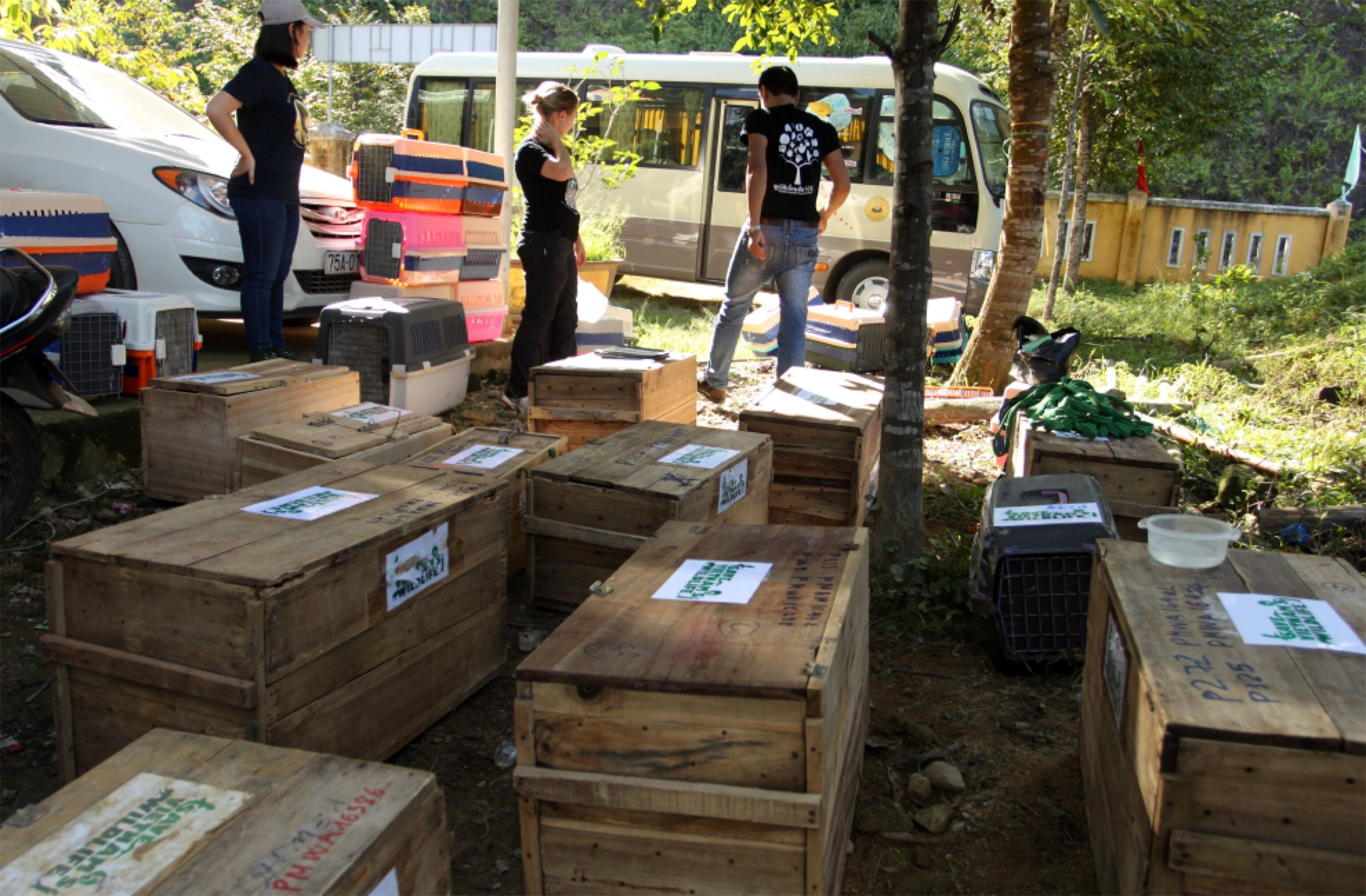
These shortcomings came to a head on November 14 and 15 in the Hague, Netherlands, when the Wildlife Justice Commission, an NGO made up of criminal justice experts, held a public hearing highlighting Vietnam’s failure to follow through on its commitments to crack down on the trade.
The group’s yearlong investigation, mainly conducted at Nhi Khe, a town near Hanoi, revealed a large number of illegal wildlife products for sale there, including rhino horn worth an estimated $42.7 million as well as significant amounts of ivory, tiger products, and other illegal animal goods. Corruption and lack of political will are the primary factors allowing this illegal commerce to continue, according to the findings.
In August the commission handed over the last of the evidence it had been gathering to the Vietnamese government. Minimal action has followed. Vietnamese officials declined invitations to attend the hearing this week in the Hague, and instead a single Vietnamese observer showed up.
“There have been declarations aplenty this year, but pledges must be backed by action on the ground,” says Olivia Swaak-Goldman, the commission’s executive director. “Do remember that while the Hanoi Illegal Wildlife Trade conference is taking place, just 20 kilometers away is Nhi Khe, one of the world’s worst wildlife-trafficking hubs.”
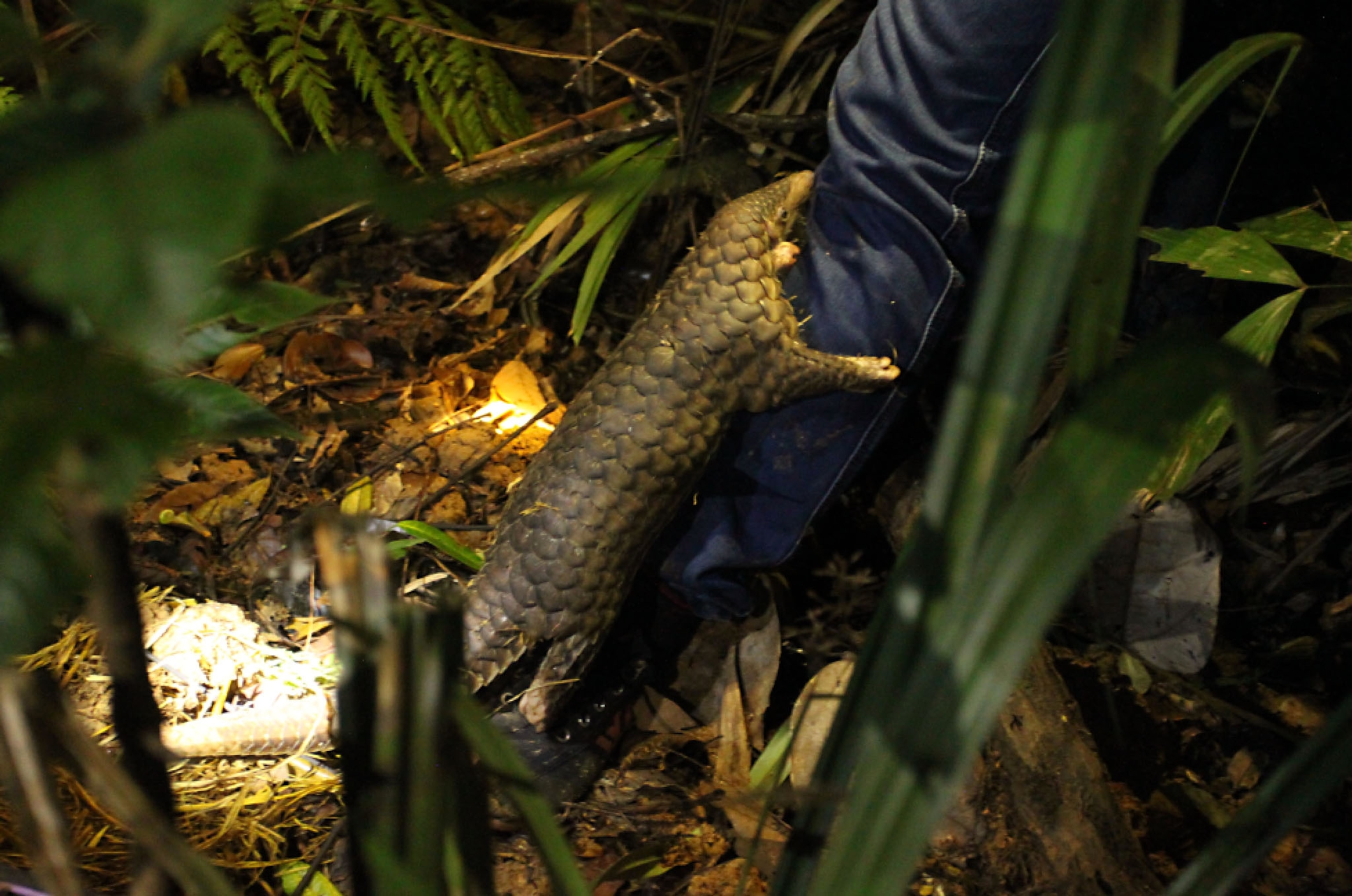
Indeed, it remains all too easy to obtain illegal wildlife products in Vietnam, even as a foreigner. The night before the pangolin release, I stopped by a posh restaurant in central Ho Chi Minh City. The menu didn’t offer any protected species, but when a Vietnamese-speaking friend asked if such things were available, the manager was quick to offer us pangolin, priced at $585 a pound. He kept the animals off the property, he said, but with a down payment a pangolin could be here—still alive—in 30 minutes. Were we to proceed with the order, the pangolin’s throat would be slit in front of us to prove we were indeed eating what we paid for. “Pangolins are so expensive because there’s fewer of them left in Vietnam now,” the manager explained. “They’re all caught in the wild.”
As a cheaper alternative, he offered us civet, also protected by law, priced at $218 a pound. As the manager tried to close the sale, a waiter brought out a yellow mesh bag containing a silently struggling animal that looked like a cross between a cat and a raccoon. “If you try it, you will love it immediately,” he assured us. We settled on noodles.
Before we left, though, he gave us his business card—just in case we changed our mind about the pangolin.




